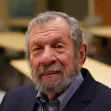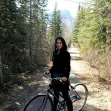Exclusives
BLOG POST
Sustainability Allows Us to Manufacture Time
<p style="text-align: justify; margin: 0in 0in 10pt" class="MsoNormal"> <span style="font-size: small"><span style="font-family: Times New Roman">Go ahead, define sustainability.<span> </span>Everyone knows countless, tangled and unconvincing definitions for this word which is quickly losing steam.<span> </span>The problem is that we’re not sure about how sustainability relates to us except in planetary ways. We’re bombarded with many concepts that if we reduce this by 20% <span> </span>then we’ll get that in 30 years which helps the earth survive. All’s well, except we’re almost numb because we won’t feel the aggregate effects for quite some time. Obviously, we’re an impatient lot.<span> </span></span></span> </p>
FEATURE
No-Exam Bylaws Amendment for Planning Faculty Will Cheapen AICP Certification
Stuart Meck and Rebecca Retzlaff call the attention of AICP certified planners to an upcoming change to the certification process which they believe will "degrade and cheapen" the AICP designation.
FEATURE
Top 10 Books - 2012
Planetizen’s tenth annual list of the best books in urban planning, design and development ranges from a crowdsourced compendium of ideas for upgrading New York City's built environment to a personal report from the streets of Karachi.
BLOG POST
New Visions for the Viaducts - Vote for your Favourites!
<p> <span style="font-size: 10pt; font-family: 'Courier New'">As my <a href="/node/52012" target="_blank">last post profiled</a>, Vancouver is creatively working to define the future of our Georgia and Dunsmuir Viaducts - infrastructure that I've referred to as "the asterix" beside the statement that Vancouver has no freeways within our city.</span><span style="font-size: 10pt; font-family: 'Courier New'"> </span><span style="font-size: 10pt; font-family: 'Courier New'">One of several inputs into that process is an open ideas competition called <a href="http://vancouver.ca/commsvcs/planning/reconnect/index.htm" target="_blank">re:CONNECT</a>.</span> </p>
BLOG POST
The Value of Transportation Enhancements; Or, Are Walking and Cycling Really Transportation?
<p class="MsoNormal"> An important current policy debate concerns whether the next U.S. federal surface transportation reauthorization should require spending on “enhancements,” which finance projects such as walkways, bike paths, highway landscaping and historic preservation. This issue receives considerable attention, despite the fact that enhancements represent less than 2% of total federal surface transportation expenditures, because it raises questions about future transport priorities, particularly the role of walking and cycling. In other words, should non-motorized modes be considered <em>real</em> transportation. </p>
BLOG POST
On the Risks and Responsbilities of Living (in Cities)
<p> Last summer, most of the nation was justifiably outraged when<a href="http://www.huffingtonpost.com/2011/07/25/raquel-nelson-this-will-never-end_n_908448.html"> Raquel Nelson was convicted of vehicular homicide</a> because her four-year old son stepped off a median into <a href="http://www.ajc.com/news/cobb/pedestrian-convicted-of-vehicular-1014879.html">oncoming traffic and was killed</a>. Common sense alone should have kept this case from going to trial, but I believe this case should have raised a bigger and more encompassing issue for planners and a question of social ethics: What is the responsibility we take as individuals for the choices we make living in an urban environment? </p>
BLOG POST
Planning Accreditation Board seeks public comments on proposed new accreditation standards
<p class="MsoNormal"> The PAB is proposing a substantial revision of the standards and criteria for accreditation of university planning programs. A public comment period on the proposal has just opened and lasts through 15 December. Here's what PAB says about the changes: </p> <p> "PAB is pleased to introduce a comprehensive revision of its accreditation standards and criteria. <strong>The goals of the change process include:</strong> </p>
BLOG POST
Should states have environmental review statutes for rezonings?
<p> <span style="color: #2a2a2a"><span style="font-size: small"><span style="font-family: Times New Roman">After reading an article on the misuse of CEQA in California,* I took a short look at New York law.<span> </span>In New York, city planners must prepare an environmental assessment when property is rezoned, and must prepare a more detailed environmental impact statement (EIS) if property has a significant effect on the environment. </span></span></span><span style="color: #2a2a2a"><span style="font-family: Times New Roman; font-size: small"> </span></span> </p>
FEATURE
L.A. Vision, U.S. Promise: Implications of the America Fast Forward Proposal
Long known as a land of sprawl and disconnected communities, Los Angeles has emerged as a leader in transit investments, providing forward-thinking leadership for how infrastructure finance can and should continue, even in difficult financial times, writes Allison Brooks and Darnell Chadwick Grisby of Reconnecting America.
BLOG POST
What Yesterday’s Elections Results Mean for Cities and City Government Across the U.S.
If you can make it past rhetoric around healthcare, abortion, collective bargaining, and immigration, the November 8th election results tell a more cohesive and calming story about American’s political sentiment.
BLOG POST
What is GeoDesign
<p> Shannon McElvaney at ESRI is working on a book on GeoDesign -- a growing movement of academics, community planning and development practitioners, ecosystem managers, and geospatial tool developers interested in the nexus between geography, design, planning, ecosystem management and community decision making. Shannon asked PlaceMatters to contribute to the book, asking us a series of questions. In the process of answering the first question "What does GeoDesign mean to you?" i fell in love with the combination of the two words and how they truely captured the range of interests engaging in the GeoDesign conversation. </p> <p> Here were a couple of my thoughts: </p>
FEATURE
Landscape Architecture Rising
BLOG POST
Why I Gave Up the Bus...For a Bike
<p> In August, I moved into a high density apartment complex just 1.5 miles from my office and a five minute walk to a bus stop. One of the central advantages of the building's location was its access to alternative transportation modes. While I could park my car for "free" (the real cost is built into the lease), I was interested in keeping it parked as much as possible. Now, after nearly three months of experimentation, I'm ready to give up the bus, and the reasons are central to understanding the future of transit in the US. </p>
BLOG POST
Preservation, Planning and Process: Manhattan’s Little Syria
<!-- /* Font Definitions */ @font-face {font-family:Cambria; panose-1:2 4 5 3 5 4 6 3 2 4; mso-font-charset:0; mso-generic-font-family:auto; mso-font-pitch:variable; mso-font-signature:3 0 0 0 1 0;} /* Style Definitions */ p.MsoNormal, li.MsoNormal, div.MsoNormal {mso-style-parent:""; margin:0in; margin-bottom:.0001pt; mso-pagination:widow-orphan; font-size:12.0pt; font-family:"Times New Roman"; mso-fareast-font-family:Cambria; mso-fareast-theme-font:minor-latin; mso-bidi-font-family:"Times New Roman"; mso-bidi-theme-font:minor-bidi;} a:link, span.MsoHyperlink {mso-style-noshow:yes; color:blue; text-decoration:underline; text-underline:single;} a:visited, span.MsoHyperlinkFollowed {mso-style-noshow:yes; color:purple; text-decoration:underline; text-underline:s
FEATURE
The Top 100 Public Spaces in the U.S. and Canada
The results of our crowdsourcing project, in collaboration with the Project for Public Spaces, reveal not an objective Top 100 but instead a handful of communities passionate about their own local public spaces.
BLOG POST
A Scary Story for Planners
<p style="margin-top: 6pt" class="MsoPlainText"> <span>Let me tell you a scary story that you can use to frighten fellow planners at next week’s Halloween party. It’s not just fun and games – this story is true and may cause nightmares.</span> </p>
BLOG POST
Test blog entry 101
BLOG POST
Retired Faculty: Keeping Up With Them Via Blogs
<p class="MsoNormal"> With the proliferation of new media planning practitioners have new ways to find out about the continuing work of planning faculty members who have retired. Not all of them blog of course, but the list below demonstrates some of the variety of these efforts. </p>
BLOG POST
Taming wide streets
<p> Before moving to New York, I'd viewed street design through a fairly simple lens: narrow streets good, wide streets bad. By and large, I still hold this view. But after living here for a few months, I have learned that not all wide streets are equally bad. The wide roads of the South are generally terrible, but New York has made some of its wide streets a bit more pedestrian-friendly. To see why, go to <a href="http://maps.google.com/help/maps/streetview/learn/using-street-view.html">Google Street View</a> and examine three addresses: 5019 U.S. 23 in Chamblee, Georgia, 770 Eastern Parkway in Brooklyn's Crown Heights neighborhood, and 107-43 Queens Boulevard in my current Queens neighborhood of Forest Hills. </p>
Pagination
Smith Gee Studio
City of Charlotte
City of Camden Redevelopment Agency
City of Astoria
Transportation Research & Education Center (TREC) at Portland State University
US High Speed Rail Association
City of Camden Redevelopment Agency
Municipality of Princeton (NJ)
Urban Design for Planners 1: Software Tools
This six-course series explores essential urban design concepts using open source software and equips planners with the tools they need to participate fully in the urban design process.
Planning for Universal Design
Learn the tools for implementing Universal Design in planning regulations.


































